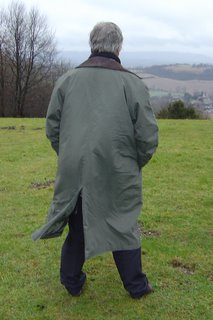
I've always tried to avoid Rouen. People have told me what a fine city it is, but I have always associated it with horrendous traffic delays, a real hindrance spoiling a good drive to somewhere else. Yesterday, with a morning to spare, I braved the city centre and was blessed with a parking space within a hundred yards of the cathedral. Yup, a parking space within a hundred yards of the burial place of Richard the Lionheart's heart (his bowels are in church of the Chateau of Châlus-Chabrol in the Limousin, his brain in the abbey of Charroux in Poitou,and the rest of him is buried next to his father at Fontevraud Abbey near Chinon).
It is certainly a fine cathedral and the spire (pictured in the background above) made it for a short time in the nineteenth century the world's tallest building. The city centre (starting a few paces from my parked car) is pedestrianised and so it was good to amble through the cobbled streets with their strange mixture of shops (one moment Hermes, the next a small outlet for baking utensils), past the Palais de Justice, the Grand Horloge, and into the market square where St Joan of Arc was burned.
The strange modern building in the foreground of the above picture is the Eglise Sainte Jeanne d'Arc which was completed in 1979 and which, according to the guidebooks, is shaped to resemble an upturned Viking warship. I thought it looked like a manta ray with a very long tail. I also thought it was rather (if not very) ugly. Inside the church is apparently very impressive, but it was getting close to lunchtime so it was closed. Typically French. Like their whole attitude to Joan of Arc really. First the Burgundians take her prisoner and sell her to the English. Then after a mockery of a trial (her main offence seems to have been wearing mens clothes) she is sentenced to death. Meanwhile Charles VII, King of France, doesn't even try to protest despite the fact that she sat beside him at his coronation.
 There is even some dispute as to the exact location of her execution. A signboard in a flowerbed says that "Le Bucher" took place exactly there, while other experts have different ideas and tourists have their pictures taken all over the square.
There is even some dispute as to the exact location of her execution. A signboard in a flowerbed says that "Le Bucher" took place exactly there, while other experts have different ideas and tourists have their pictures taken all over the square.Her ashes were apparently thrown in the Seine but, whatever the history, and there is lots of it at Rouen (I haven't even mentioned the World War II bombing which destroyed large parts of the centre), it is a wonderful city.
I'll definitely brave the traffic to return - with or without a parking place.

No comments:
Post a Comment